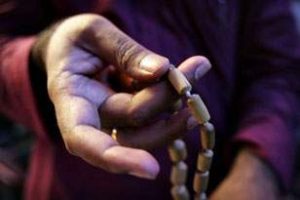Self-Awakening and Empowering through Mantra Yoga
Mantra Yoga
The chanting of God’s name brings comfort to the body, mind and souls of human beings. Almost all religions believe in this Mantra chanting technique. Hindus take the name of Rama or Krishna or any of the other deities. Christians chant the name of Jesus and Moslems pray to Allah. In the effort towards liberation, man clings to the divine name. Mantra yoga is based on this principle. It is practiced by repeating the holy name, which is called japa, practiced certain sacred formulas.
It is common experience by everyone, that different sounds produce different effects. Sound is caused by the movement of air, which creates pressure. When this reaches our eardrums we are conscious of the sound. Music has a soothing effect, while a shrill or jarring sound causes discomfort. Thus sounds are associated with vibrations, and different kinds of sounds cause differing vibrations. A singer with a deep enough voice can even break a plate of glass by merely singing near it. The principle of Mantra yoga is similar. A word or a mantra uttered in the proper manner can produce powerful molecular waves. According to Swami Sivananda, The vibrations produced by the uttering of the word OM or AUM are so powerful.
Bija or seed Mantra
In Mantra yoga certain sounds are known as bija or seed mantra. These have the capacity of permanently affecting the structure of the nerve centers. When the bija mantra is uttered, its vibrations affect the particular chakra to which it is directed, and the lotus of there charka, flowers. The most potent bija mantra is the syllable ‘OM’. In it the organs of speech have gathered and reproduced all the sounds occurring in the Trimurti(brahma, Vishnu & maheswara). The letter A stands for creation and the Lord of creation, Brahma. U is for the Preserver, Vishnu, M for Shiva the Destroyer. Thus, creation, preservation and destruction are all contained in Aum. Next in importance to Aum comes the Gayatri mantra which conveys the eternal wisdom of the Vedas.
Mantra with bhava (feeling)
A mantra has two subbed visions, kriya (action) and bhava (feeling). The former, kriya, is the mere repetition of the mantra. The mere mechanical repetition of a mantra does not have any effect. There must be a strong intent and feeling (bhava) put into it. The mantra is effective according to the magnitude of the effort which the chanter puts into it.
Types of Mantra
There are many kinds of mantras, according to the object with which they are uttered. The four chief classifications are siddha (achieved), saadhya (instrumental),sasiddhaI (with achievement) and ari or ripu (enemy). The first kind, the siddha, are comparable to friends, and bring results within a specified time. The saadhya are like faithful servants and bring results after a long time. The sasiddha are only of temporary assistance.
Swami Sivananda on Mantra Yoga
And bear fruit according to the merits to those who chant them. The are kind act as enemies and destroy the merits of those who use them. It is believed that in the present Kaliyuga age mantra yoga is the easy and direct way to God realization. If one repeats the mantra relating to a particular deity, the deity appears.  Rhythmic chanting of a mantra is called japa. The effect of japa is ten times as great as other rituals. If one repeats the mantra silently the effect is a hundred times as much, and if the japa is chanted in one’s mind merely, the merit is a thousand times as great. There are many varieties of japa. Some are done with the help of a rosary, while others require only the mind’s uninterrupted concentration.
Rhythmic chanting of a mantra is called japa. The effect of japa is ten times as great as other rituals. If one repeats the mantra silently the effect is a hundred times as much, and if the japa is chanted in one’s mind merely, the merit is a thousand times as great. There are many varieties of japa. Some are done with the help of a rosary, while others require only the mind’s uninterrupted concentration.
